Bitcoin’s latest resurgence, which saw the world’s largest cryptocurrency by market capitalization hit a new nine-month high in the mid-$26,000s on Tuesday, has been accompanied by a number of key technical and on-chain indicators roaring back to health and once again send a bullish BTC signal.
Though the Bitcoin price has dropped back below the $25,000 mark once again as of the Wednesday Asia Pacific session, BTC is still up over 27% versus last week’s lows in the mid-$19,000s. At the time, concerns about a series of high-profile failures of crypto/start-up/tech-friendly banks was weighing on the price.

But bulls aggressively defended key long-term in the form of the 200DMA and Realized Price (both in the $19,700-800 range). Then, news over the weekend that US authorities would be stepping into 1) protect depositors and 2) introduce a new $25 billion bank liquidity program to strengthen balance sheets helped propel BTC higher.
Other key narratives pumping the rally include 1) the idea that financial stability concerns make significant further Fed tightening much less likely and 2) financial stability concerns boost the appeal of Bitcoin, which represents an alternative, decentralized financial system.
Bitcoin’s strong defense of its 200DMA and Realized Price has also helped spur confidence in the rally. After showing some signs of weakness last week, the latest rally has sent a number of key on-chain metrics trending in the right direction.
More specifically, if Bitcoin can hold onto recent gains and/or extend upside towards the next key resistance around just above $28,000 (as many technicians now deem likely), crypto analytics firm Glassnode’s widely followed “Recovering from a Bitcoin Bear” dashboard of on-chain and technical indicators is likely to once again start flashing a bull market signal.
Recovering from a Bitcoin Bear
Glassnode’s “Recovering from a Bitcoin Bear” dashboard tracks eight indicators to ascertain whether Bitcoin is trading above key pricing models, whether or not network utilization momentum is increasing, whether market profitability is returning and whether the balance of USD-denominated Bitcoin wealth favors the long-term HODLers.
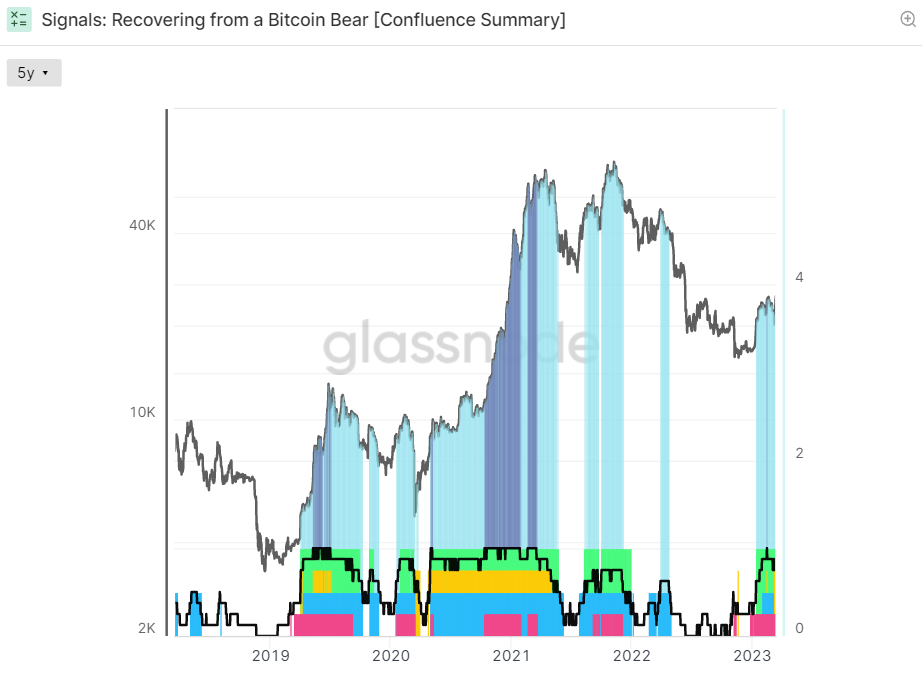
The chart is shaded light blue when five out of eight indicators are flashing green and dark blue when all eight are flashing green.
When all eight are flashing green, this has historically been a strong bullish sign for the Bitcoin market. At the moment, seven of eight indicators are flashing green. Bitcoin is trading comfortably above its 200DMA and Realized Price, the first two. A break above these key levels is viewed by many as an indicator that near-term price momentum is shifting in a positive direction.
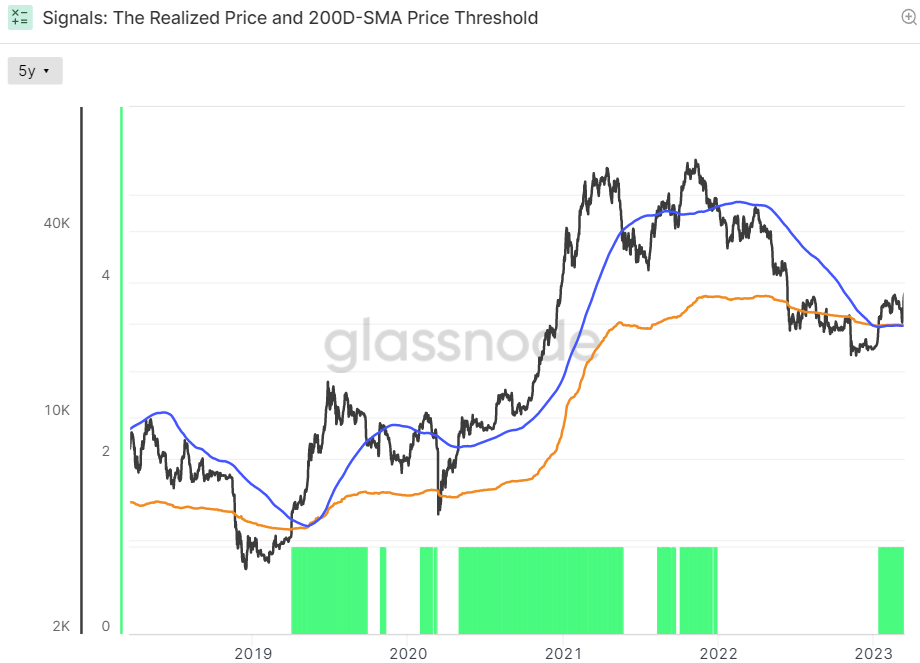
The 30-Day SMA of new Bitcoin address creation moved above its 365-Day SMA a few months ago, a sign that the rate at which new Bitcoin wallets are being created is accelerating. This has historically occurred at the start of bull markets.
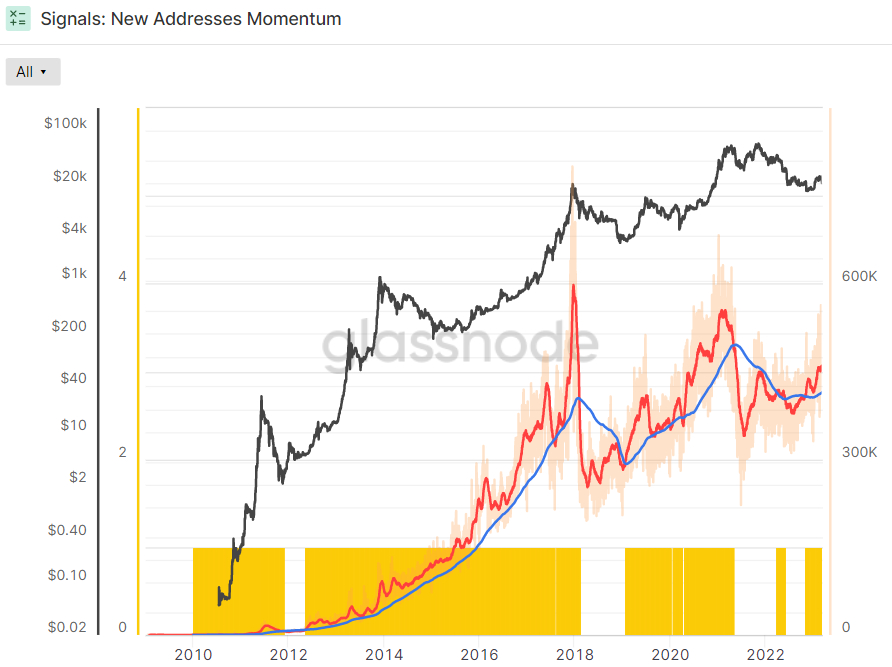
Meanwhile, Revenue From Fees Multiple was the indicator that turned positive on Wednesday, only to then turn negative again on Thursday. The Z-score is the number of standard deviations above or below the mean of a data sample. In this instance, Glassnode’s Z-score is the number of standard deviations above or below the mean Bitcoin Fee Revenue of the last 2-years.
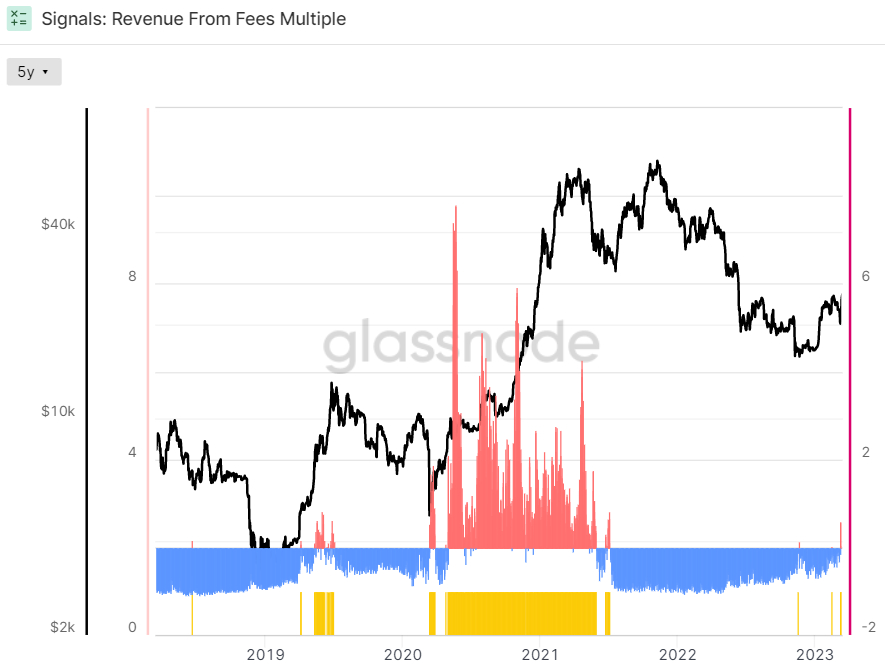
This means the third and fourth indicators relating to whether network utilization is trending positively once again are also sending a bullish signal.
Moving on to the fifth and sixth indicators relating to market profitability, despite pulling back sharply in recent days to reflect the recent drop in the Bitcoin market, the latest reversal to new nine-month highs has kept the 30-Day Simple Moving Average (SMA) of the Bitcoin Realized Profit-Loss Ratio (RPLR) indicator above one.
That means that the Bitcoin market is realizing a greater proportion of profits (denominated in USD) than losses. According to Glassnode, “this generally signifies that sellers with unrealized losses have been exhausted, and a healthier inflow of demand exists to absorb profit taking”. Hence, this indicator continues to send a bullish signal.
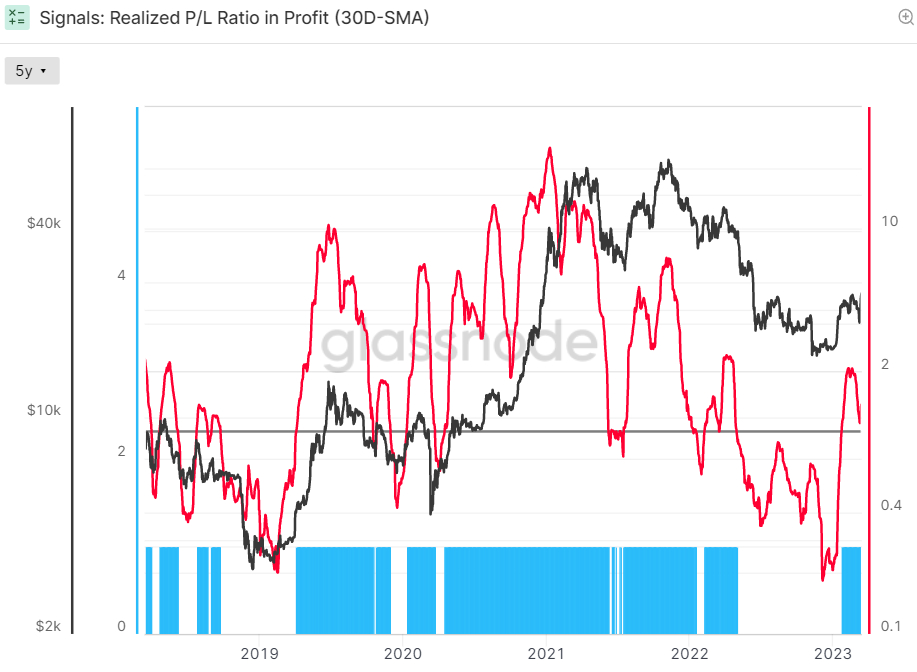
Meanwhile, the 30-day SMA of Bitcoin’s Adjusted Spent Output Profit Ration (aSOPR) indicator, an indicator that reflects the degree of realized profit and loss for all coins moved on-chain, recently dipped below one (meaning it is no longer sending a bull signal). That essentially means that, on average over the past 30 days, the market is no longer in profit.
However, the last price bounce, if sustained, is expected to lift this indicator back to the north of one shortly. That would mean all eight of Glassnode’s indicators are flashing green. Looking back over the last eight years of Bitcoin history, the aSOPR rising above 1 after a prolonged spell below it has been a fantastic buy signal.
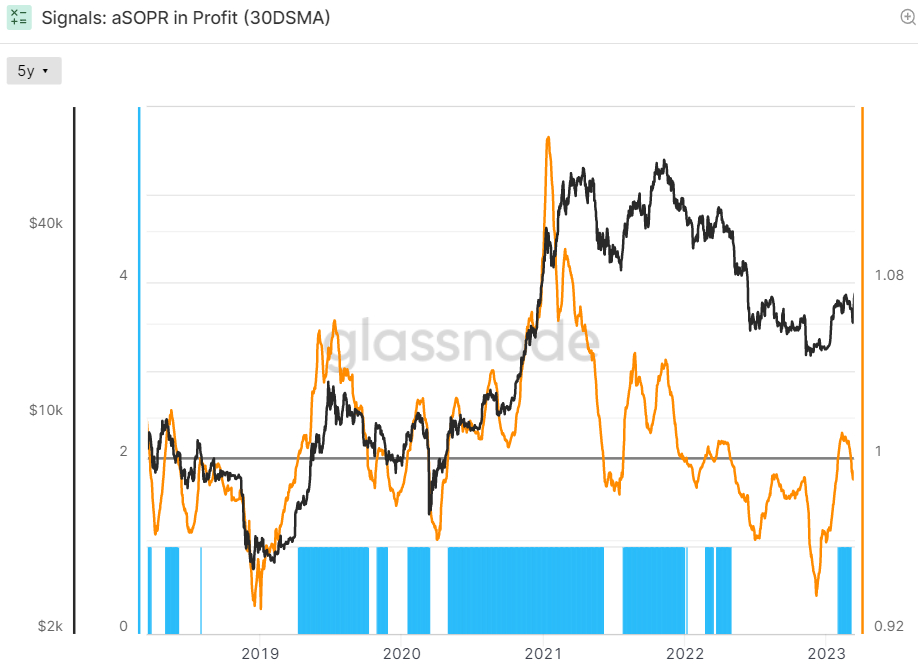
Finally, there are the final two indicators that relate to whether the balance of USD wealth had sufficiently swung back in favor of the HODLers to signal weak-hand seller exhaustion.
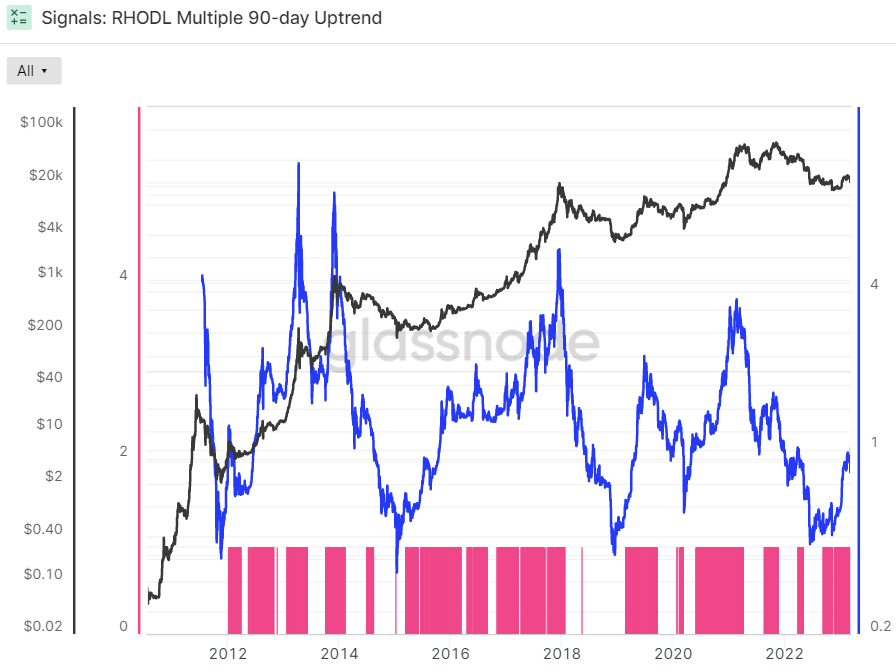
The Bitcoin Realized HODL Multiple has been in an uptrend over the last 90 days, a bullish sign according to Glassnode. The crypto analytics firm states that “when the RHODL Multiple transitions into an uptrend over a 90-day window, it indicates that USD-denominated wealth is starting to shift back towards new demand inflows”. It “indicates profits are being taken, the market is capable of absorbing them… (and) that longer-term holders are starting to spend coins” Glassnode states.
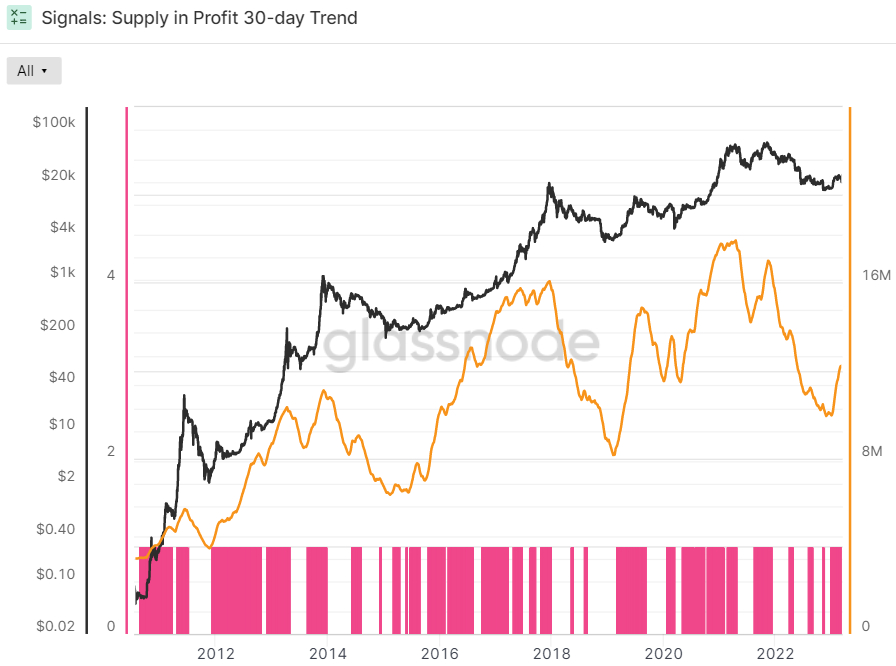
Glassnode’s final indicator in its Recovering from a Bitcoin Bear dashboard is whether or not the 90-day Exponential Moving Average (EMA) of Bitcoin Supply in Profit has been in an uptrend over the last 30 days or not. Supply in Profit is the number of Bitcoins that last moved when USD-denominated prices were lower than they are right now, implying they were bought for a lower price and the wallet is holding onto a paper profit. This indicator is also flashing green.
Analysis of Bitcoin Market Cycles Also Give Reason to be Bullish
The above positive shift in Bitcoin’s on-chain trends come at a time when more commonly cited so-called “core” on-chain metrics, like the number of active addresses, the number of addresses with a non-zero balance, the rate of new address creation and the number of daily transactions have all also been trending in a positive direction, indicating rising demand to utilize the Bitcoin blockchain.
Various methods of analysing Bitcoin’s longer-term market cycle also give reason for optimism. In early January, crypto-focused Twitter account @CryptoHornHairs identified that Bitcoin is following nearly exactly in the path of a roughly four-year market cycle that has been respected perfectly now for over eight years.
Elsewhere, a widely followed Bitcoin pricing model is sending a similar story. According to the Bitcoin Stock-to-Flow pricing model, the Bitcoin market cycle is roughly four years, which shows an estimated price level based on the number of BTC available in the market relative to the amount being mined each year.
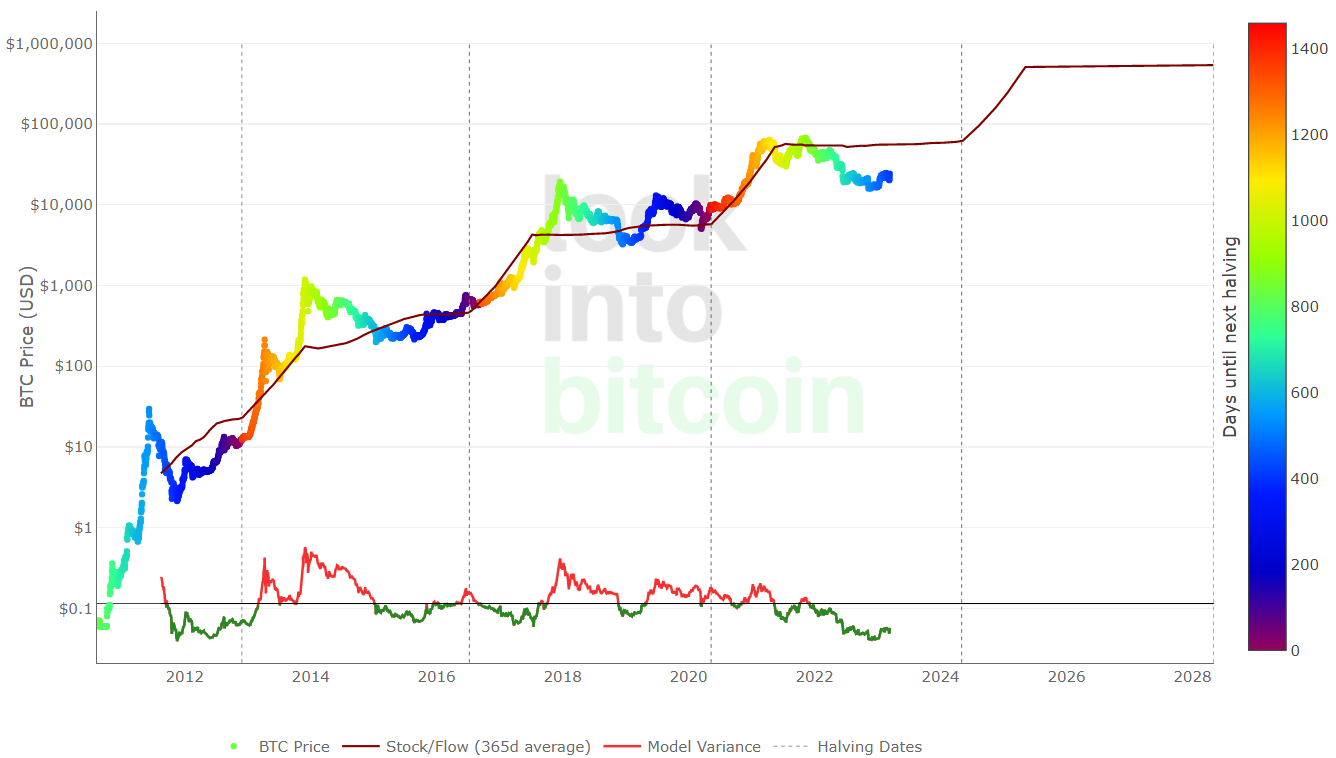
Bitcoin’s fair price right now is around $55K and could rise above $500K in the next post-halving market cycle – that’s around 20x gains from current levels.
Finally, Blockchaincenter.net’s popular Bitcoin Rainbow Chart shows that, at current levels, Bitcoin is in the “BUY!” zone, having recently recovered from the “Basically a Fire Sale” zone in late 2022. In other words, the model suggests that Bitcoin is gradually recovering from being highly oversold. During its last bull run, Bitcoin was able to reach the “Sell. Seriously, SELL!” zone.
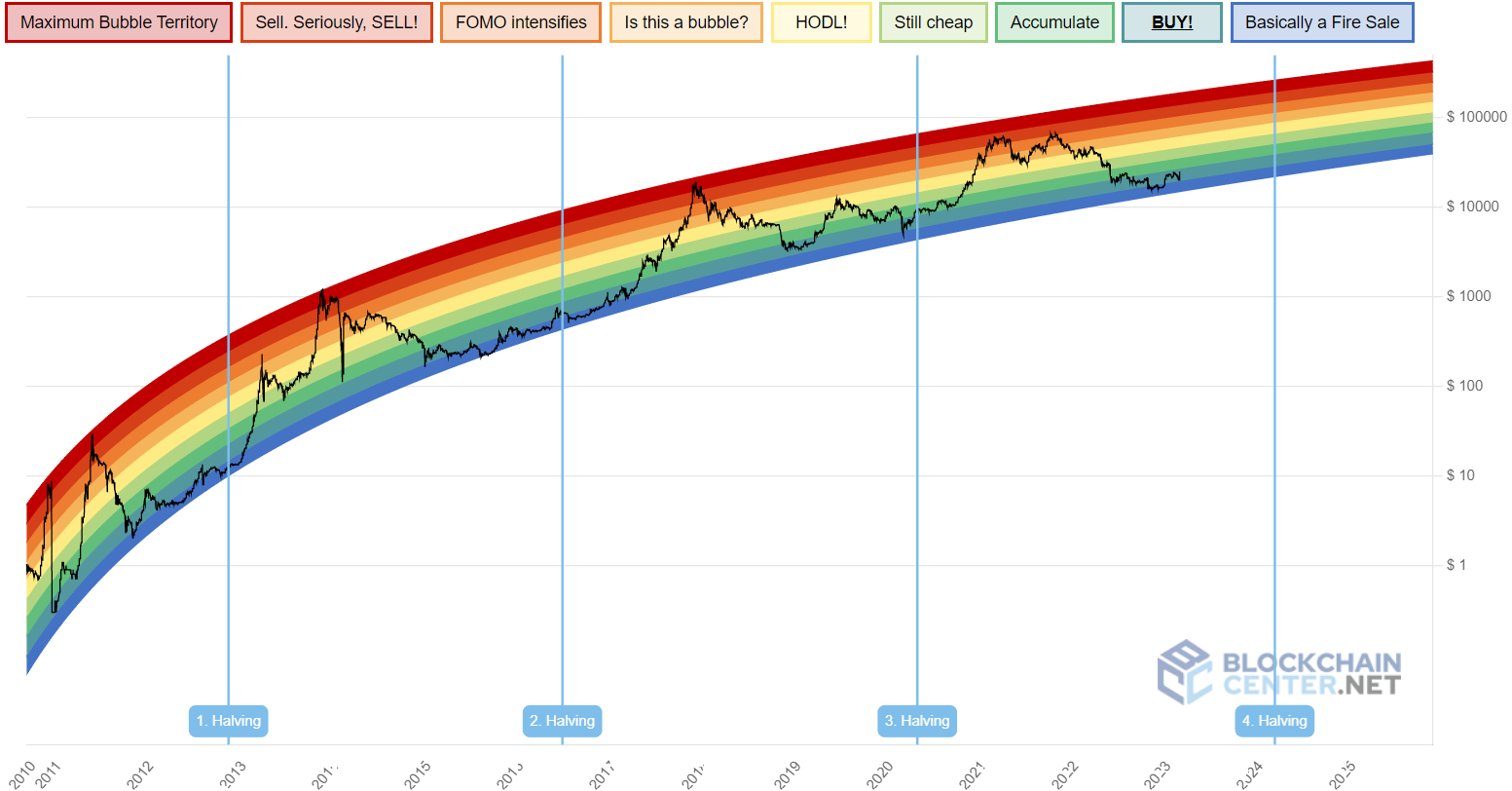
If it can repeat this feat in the next post-halving market cycle within one to one and a half years after the next halving, the model suggests a possible Bitcoin price in the $200-$300K region. That’s around 8-13x gains from current levels.
Credit: Source link











































































































































